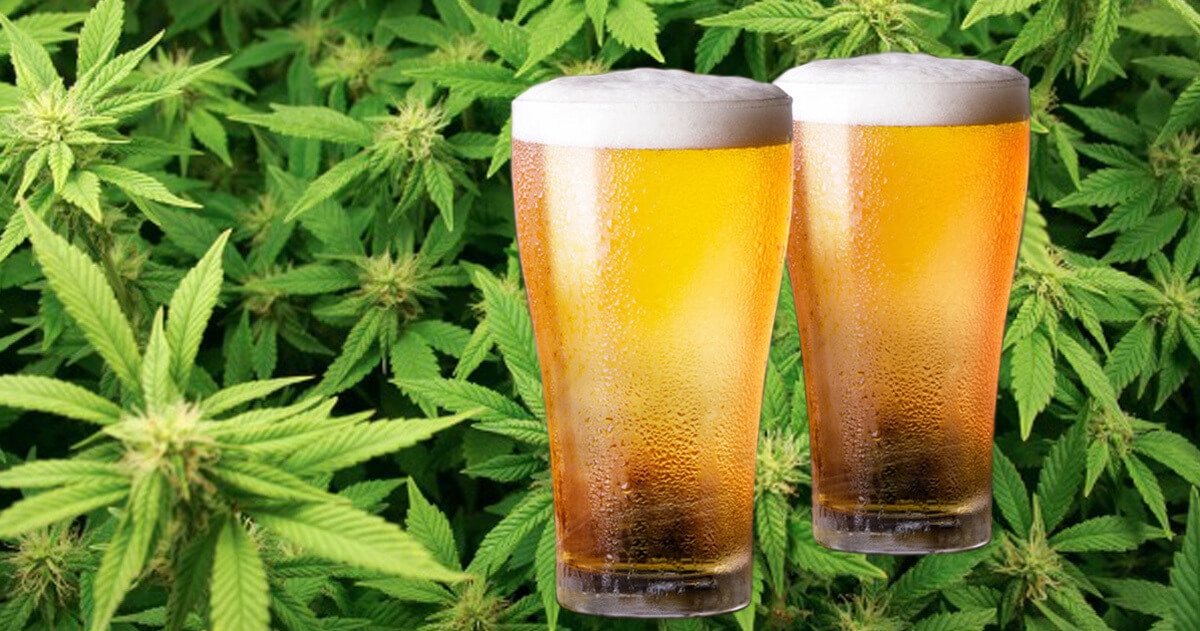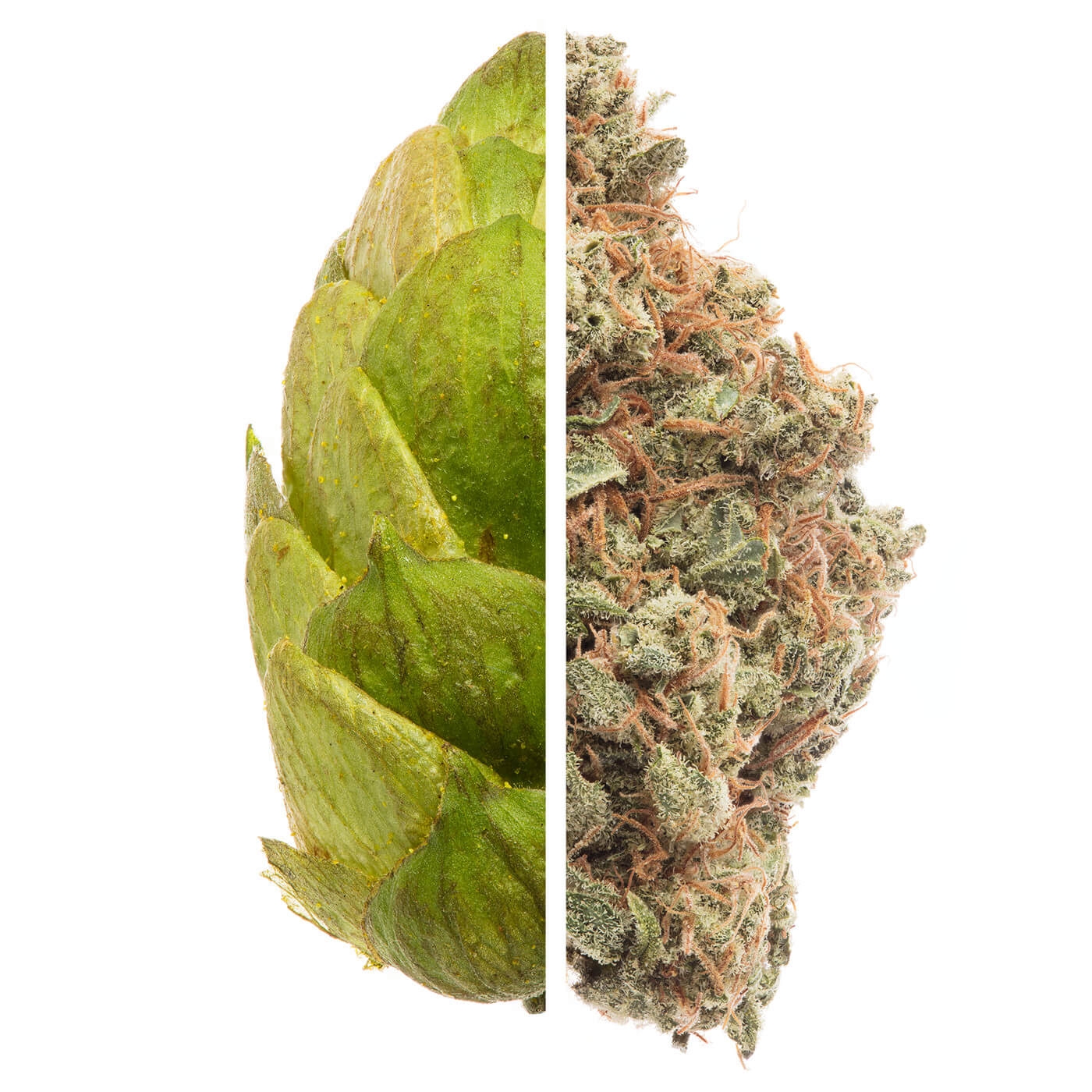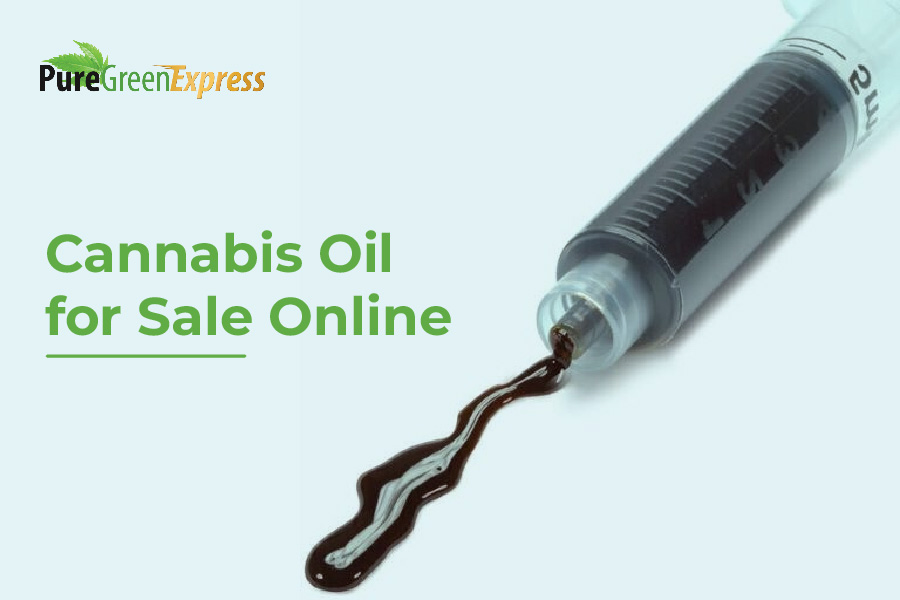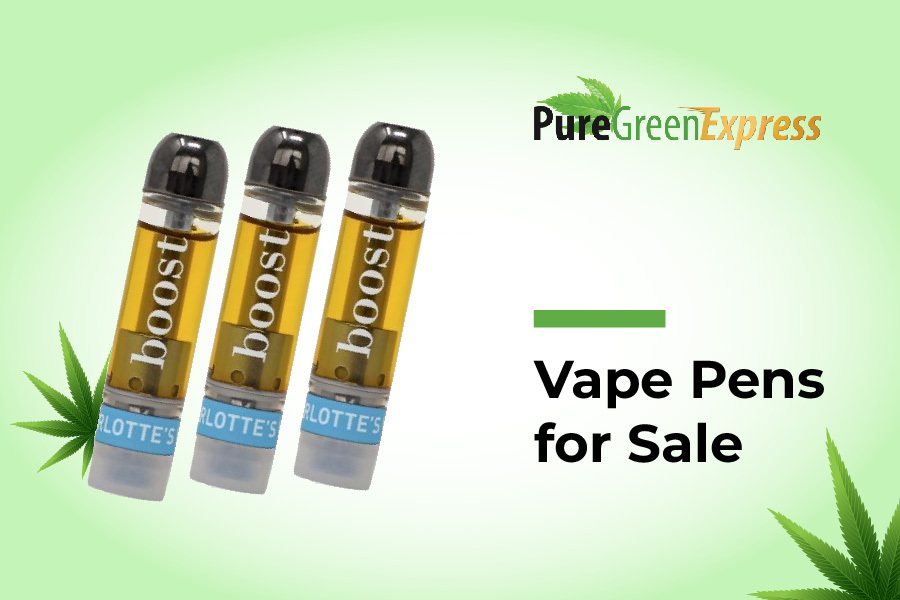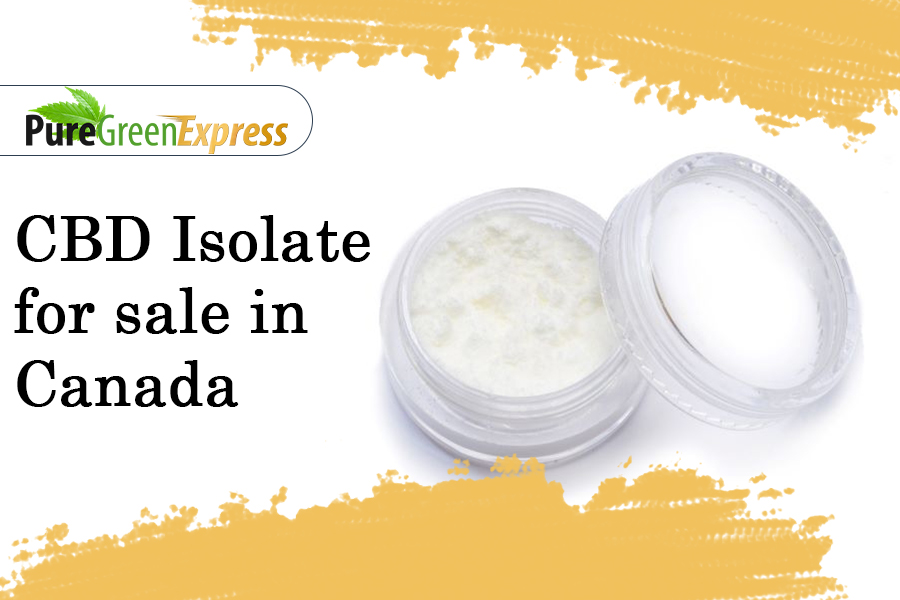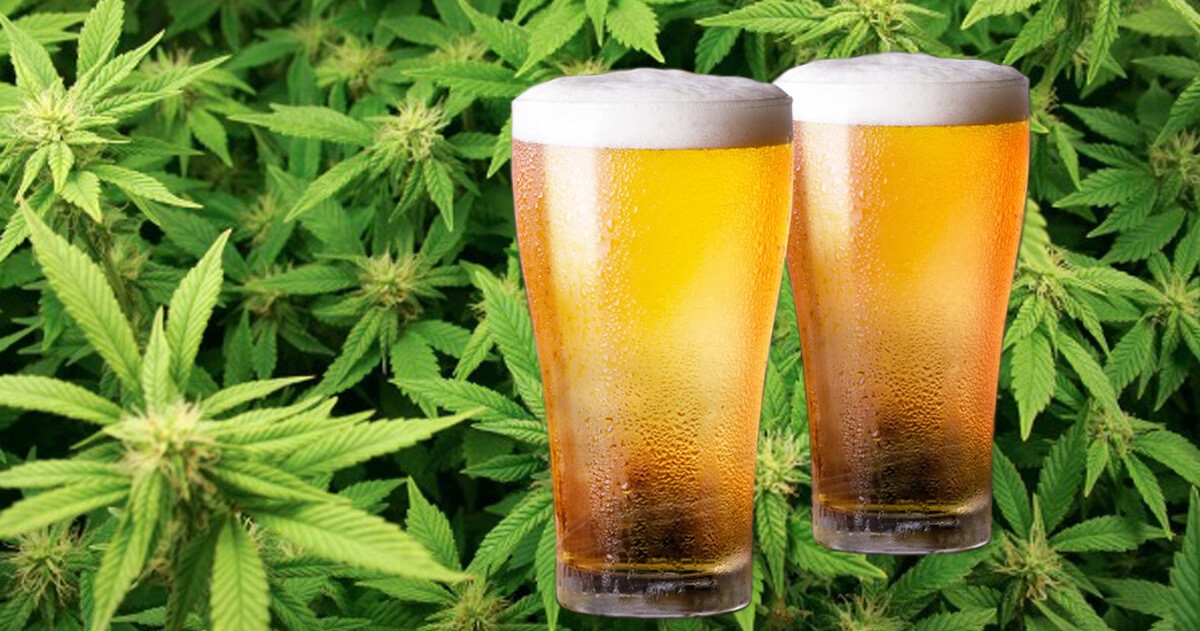
If you’ve ever sipped on a hoppy IPA you may have noticed that it has a similar flavour profile to our other favourite way to wind down after a long day. That earthy, almost skunky scent is from the terpenes in the hops- the same ones that are primarily found in cannabis. It isn’t only the shared terpenes that make these green plants similar, hops and cannabis are both parts of the exclusive Cannabaceae family. This club is so exclusive that the only other species welcomed in has been the giant hackberry tree.
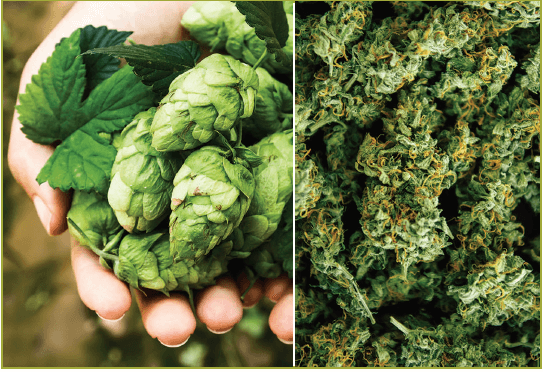 Hops and Cannabis are Cousins
Hops and Cannabis are Cousins
Botanists decided fairly early on that cannabis and hops were closely related due to their similar appearances. They share the same serrated, lobed leaves and aromatic, resinous glands. Their physical likeness was enough to secure their spot in the Urticales plant family until the 1900s when molecular biologists started poking around in the plant’s DNA. Their findings led to years of confusion on how to properly categorize these pungent, green plants. Yes, years. In 1998 they put together a specialized group of experts, the Angiosperm Phylogeny Group, to sort out the mess that was the flowering-plants taxonomic system. In 2002 they finally came back with their long-awaited decision. They confirmed that Humulus (hops) and cannabis share a common ancestor and are, in fact, very closely related.
They Share Many of The Same Terpenes
The reason why these two cousins share similar tastes and flavours is because of their terpene profiles. If this is your first time hearing that term, terpenes are organic compounds in plants that produce their unique scents and flavours. The star of this show is myrcene which usually makes up about 75% of the terpene profile in both hops and cannabis. This earthy terpene provides a musky, peppery taste while providing health benefits as an anti-inflammatory, anti- tumour, and sedative. Other common terpenes found in both are limonene and pinene.
“Researchers found close to 30 terpenes in the cannabis genome, producing such ‘fragrant molecules’ as limonene, myrcene, and pinene when those genes are active, and thus give it an alternately citrusy, skunky, or earthy quality.”
Forbes Magazine
Some Hops Can Get You High
You can’t get high off of hops! Or, can you? There is one subspecies of hops out there that are native to South-West China and North-East India that contain THC, CBD, or both together. This was discovered by the scientist, Dr. Bomi Joseph, who wanted to find an alternative to cannabis-derived CBD.
E.J. Lance, an agricultural writer, wrote his famous guide “The Hop Farmer: A Complete Account of Hop Culture,’ in 1838. He believed that hoppy ales were potentially psychoactive
“It is the opinion of brewers that the intoxicating qualities of ale are to be partly ascribed to the oil of the hop. … As a narcotic its powers are known in beer, and have been often used to produce sleep from the smell only … .”!
This belief carries through into today’s beer culture, especially with hop-forward craft beers. People claim they lead to sedation, euphoric happiness, and even more vivid dreams. Maybe this is why we have seen such a jump in public interest for craft beer?
Making Cannabis-Infused Beer
The legalization of Cannabis has led to innovation and creativity that we haven’t seen since our ancestors discovered it could be used for everything from medicine to fabric. With this golden age of discovery and cannabis-infused everything, it isn’t very hard to find a delicious craft can that is infused with CBD, THC, or both. If you are unable to find what you are looking for or you’re looking for a fun way to spend your time then I highly suggest trying your hand as a master home-brewer.
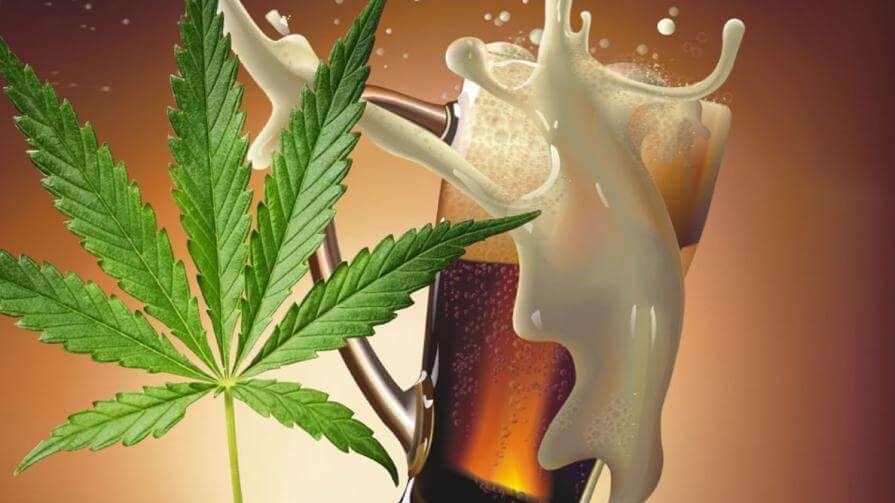 Beers that pair best with cannabis
Beers that pair best with cannabis
- IPA: These are those hoppy beers I was talking about in the intro! IPA’s are the perfect pairing for cannabis and always my first choice. The bitterness from the hops can mask and compliment the pungency of the cannabis.
- Stout: Darker beers like porters and stouts are great for masking the strong flavour of your cannabis strain if it’s not soothing you enjoy. Another positive is that these heavy beers may help you fill up when you get the munchies!!
- Lagers: This is a brave choice for the lovers of light, summer beers with a hint of that aromatic cannabis. I suggest enjoying with a lime out in the sun.!
Let’s Get Started
As with most edible cannabis treats we need to begin with the decarboxylation process. Don’t worry if this is your first time roasting up your buds, I’ll walk you through the steps:
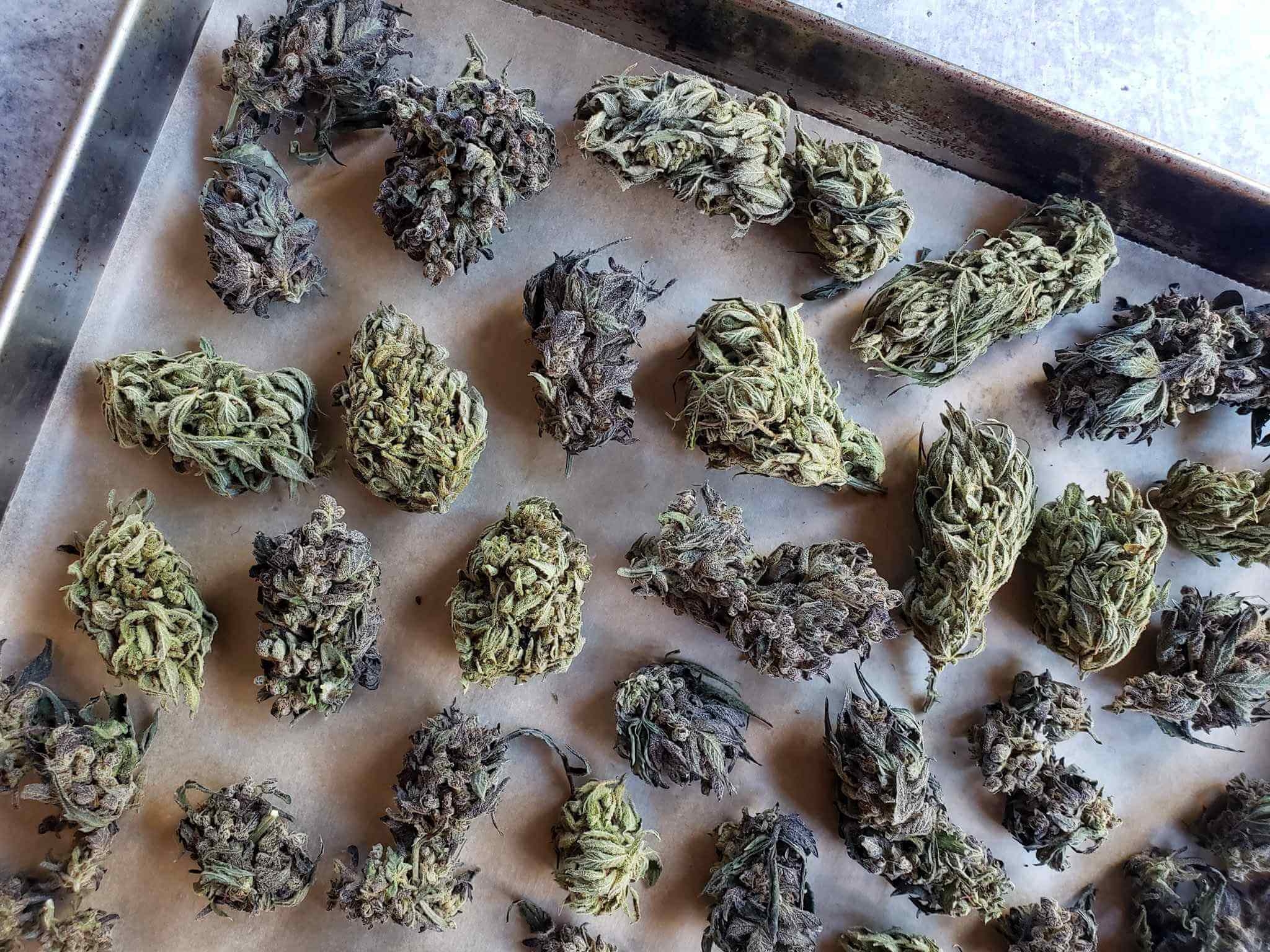
- Wash the buds to make sure it is clean and won’t contaminate the beer.
- Place the rinsed buds into a french press and cover with distilled water for 2-3 days, changing the water once a day until it is clear.
- Take the soaking cannabis and put it in either cheesecloth or a tea bag and boil for 1-2 minutes to blanch.
- Break your buds into small pieces and put them on an oven-safe tray. Heat at 225 degrees Fahrenheit for 55 minutes.
Now that your cannabis has been decarbed we can move onto the hops! There are many hops to choose from as there are many strains of cannabis so choosing the right one for you will be based on the taste profile you hope to achieve. Citra hops are my favourite go-to as they are high in limonene and give a distinct citrus taste to their beer.
Time To Dry-Hop
We are going to want to dry hop our brew twice to get the results and flavour we want.
First Dry-Hop: Adding the hops ion first will reduce the chances that you will end up with a terrible concoction that tastes strongly of grass. Second Dry-Hop: 3-4 days before bottling your beer add in more hops and your cannabis at a 1:1 ratio.
After your beer is ready it’s time to bottle it. The cannabis helps preserve the beer so it can last anywhere from a few months to a year.
Have you made cannabis-infused beer or are interested in trying it out? Let us know about your experience!
